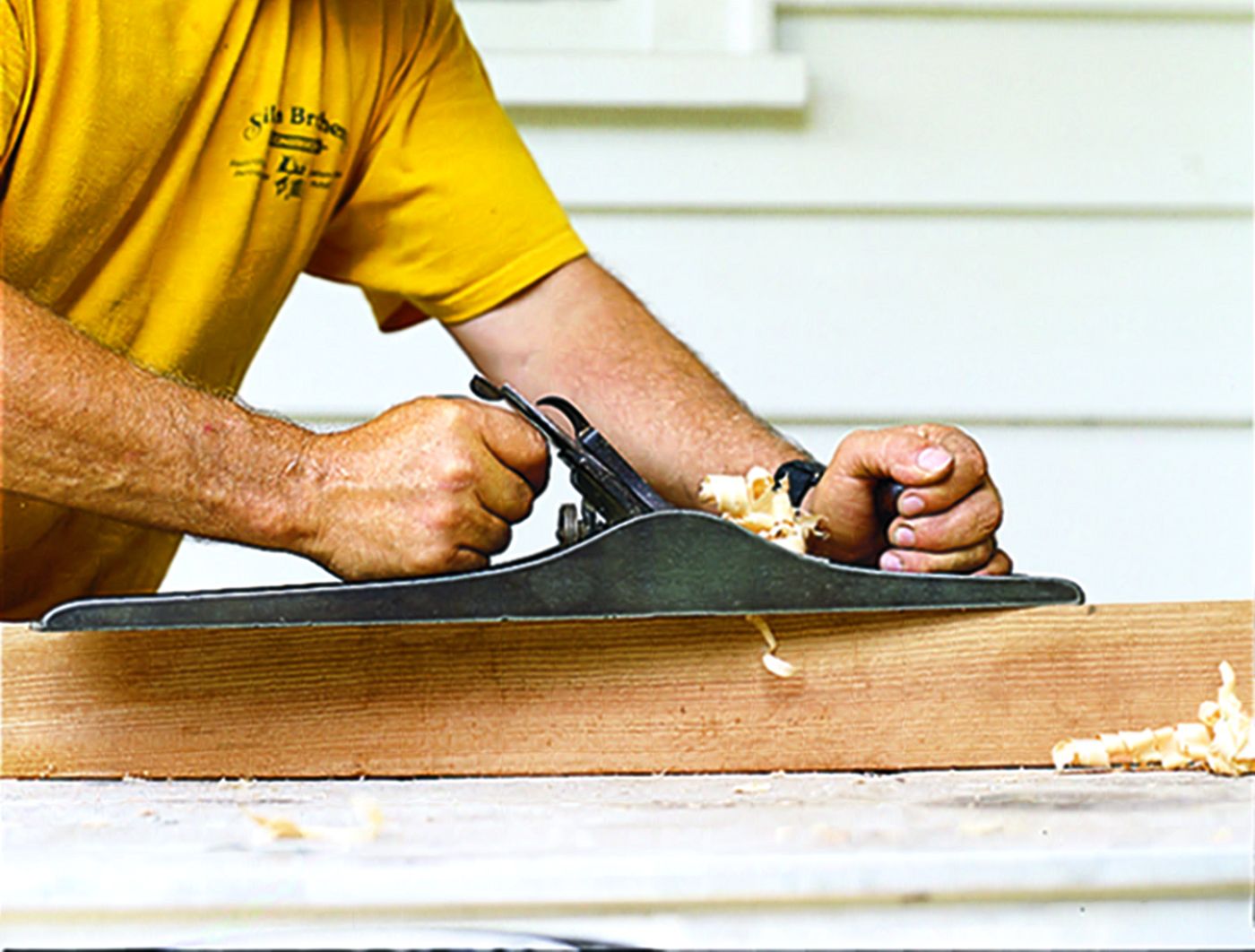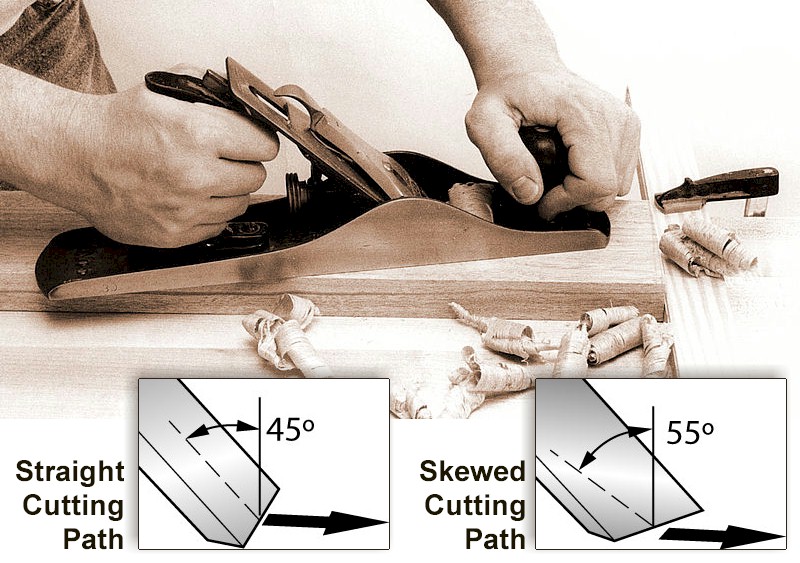If you’re wondering why you should use a hand planer, you’re in the right place! Whether you’re a woodworking enthusiast or just starting out, a hand planer can be a game-changer. It’s a versatile tool that helps you shape and smooth wood with precision.
A hand planer allows you to remove material from the surface quickly and easily, giving you the power to shape wood to perfection. Do you want to create smooth, even surfaces for your projects? A hand planer can help you achieve just that!
Not only does a hand planer save you time and effort, but it also gives you the flexibility to work on different types of wood. From rough lumber to finished pieces, a hand planer can handle it all. So, if you’re looking to take your woodworking skills to the next level, grab a hand planer and let your creativity soar!

Why Use a Hand Planer: An Essential Tool for Woodworking
When it comes to woodworking, having the right tools is essential. One tool that every woodworker should have in their arsenal is a hand planer. Whether you are a professional or a hobbyist, a hand planer can make a significant difference in your woodworking projects. In this article, we will explore the benefits of using a hand planer, its versatility, and some tips to maximize its effectiveness.
The Benefits of Using a Hand Planer
Using a hand planer offers numerous benefits that set it apart from other woodworking tools. First and foremost, a hand planer allows for precision and control. Unlike power planers, which can be bulky and challenging to maneuver, a hand planer gives you the ability to work with finesse and make precise adjustments. This level of control is especially crucial when working on delicate or intricate projects.
Another advantage of using a hand planer is its ability to create smooth and even surfaces. With its sharp blade and adjustable settings, a hand planer can easily remove rough patches or imperfections on your wood, resulting in a flawless finish. This tool is particularly useful when preparing wood for further treatments such as staining or varnishing.
In addition to its precision and surface-smoothing capabilities, a hand planer is also a cost-effective option. Compared to power planers or other specialized woodworking machinery, a hand planer is relatively affordable. It requires no electricity and can be easily used in any workshop, making it a perfect choice for those on a budget or with limited space.
Versatility of Hand Planers
One of the greatest advantages of a hand planer is its versatility. From leveling uneven boards to chamfering edges or jointing surfaces, a hand planer can handle a wide range of tasks. The compact design allows it to reach tight spaces, making it ideal for working on furniture, cabinetry, or any project that requires precise shaping or smoothing.
Hand planers can be used on various types of wood, including hardwoods, softwoods, and even laminates. They are also suitable for both rough and finishing work, providing flexibility throughout the woodworking process. Whether you need to remove excess material, square edges, or refine a piece, a hand planer is a reliable tool that can tackle multiple woodworking challenges.
Furthermore, hand planers are not limited to just woodworking. They are also useful for other applications such as fitting doors, trimming plastic or composite materials, and even crafting musical instruments. The versatility of a hand planer makes it an invaluable addition to any DIY enthusiast or professional woodworker’s toolkit.
Choosing the Right Hand Planer for Your Needs
When selecting a hand planer, there are several factors to consider. First, determine the type of projects you will be working on and the level of precision required. If you primarily work on small or detailed pieces, a block hand planer may be the best choice for its compact size and maneuverability. On the other hand, if you work on larger surfaces or require faster material removal, a bench hand planer with a longer sole might be more suitable.
Next, consider the blade quality and adjustability. Look for a hand planer with high-quality steel blades that can hold a sharp edge for extended periods. Adjustable depth and width settings are also important to customize the planing depth and width according to your specific needs. Additionally, ergonomic features like a comfortable handle and a sturdy base will ensure better control and stability during operation.
Lastly, take into account your budget and overall value for money. While it’s tempting to opt for the cheapest option, investing in a well-built, durable hand planer with a reputable brand will yield better results and longevity. Read reviews, compare prices, and choose a hand planer that strikes the right balance between quality and affordability for your woodworking projects.
Tips for Using a Hand Planer Effectively
Now that you have a hand planer, it’s essential to use it correctly to achieve the best results. Here are some tips to help you use a hand planer effectively:
- Ensure your blades are sharp: Sharp blades make all the difference in achieving smooth and clean cuts. Regularly sharpen or replace the blades as needed to avoid tear-outs or rough finishes.
- Start with light passes: Begin with shallow cuts and gradually increase the depth to avoid removing too much material at once. This approach allows for better control and precision.
- Go with the grain: Always follow the direction of the wood grain when planing to minimize tear-outs. Planing against the grain can result in splintering and an uneven surface.
- Secure your workpiece: Use clamps or a vise to secure your workpiece firmly before planing. This ensures stability and prevents accidents or shifting during the planing process.
- Frequently clean the planer: Wood shavings and debris can accumulate in the planer, affecting its performance. Regularly remove the shavings and clean the planer to maintain optimal functionality.
Why Use a Hand Planer: Final Thoughts
A hand planer is an indispensable tool for any woodworker, offering precision, control, and versatility. From leveling surfaces to shaping edges, a hand planer can enhance the quality and craftsmanship of your woodworking projects. With the right selection and proper techniques, a hand planer can become your go-to tool in the workshop. So, if you’re looking to take your woodworking to the next level, invest in a hand planer and unlock its potential.
Key Takeaways: Why Use a Hand Planer?
- A hand planer is a useful tool for shaping and smoothing wood surfaces.
- Using a hand planer helps create a professional finish on woodworking projects.
- Hand planers are portable and can be used in a variety of woodworking projects.
- They are ideal for removing imperfections, chamfering edges, and leveling surfaces.
- Using a hand planer can save time and effort compared to sanding or other methods.
Frequently Asked Questions
Are you curious why using a hand planer is beneficial? We’ve got you covered! Check out these frequently asked questions to gain a better understanding of why hand planers are a valuable tool.
Q: What are the advantages of using a hand planer?
A: Hand planers offer several advantages. Firstly, they allow for precise and controlled material removal, making them ideal for woodworking projects. The ability to adjust the depth and angle of the blade allows for versatility in planing tasks. Hand planers also allow you to work with curved surfaces or irregular shapes, which may not be possible with other tools. Additionally, hand planers are portable and require minimal setup, making them convenient for on-site or remote projects.
Furthermore, hand planers offer a tactile experience that fosters a deeper connection with the woodworking process. The hands-on approach allows you to feel the wood’s texture, making it easier to achieve the desired smoothness. Overall, using a hand planer provides greater control, versatility, convenience, and a more personalized woodworking experience.
Q: Can a hand planer be used for different materials?
A: Yes, a hand planer can be used on various materials, not just wood. While they are primarily designed for woodworking, hand planers can also be utilized on materials like soft metals and plastics. However, it is important to note that the blade of the hand planer may need to be adapted or replaced to suit the specific material being planed. When venturing beyond wood, it is crucial to ensure the blade is compatible with the material at hand to achieve optimal results.
By using a hand planer on different materials, you can expand your woodworking capabilities and explore new projects. Just remember to always select the appropriate blade and take necessary safety precautions when working with different materials.
Q: How does a hand planer differ from a power planer?
A: The main difference between a hand planer and a power planer lies in the source of power used to operate them. Hand planers, as the name suggests, rely on manual power. They are operated by pushing or pulling the tool along the surface being planed. Power planers, on the other hand, are electrically or battery powered, allowing for easier and faster material removal.
While power planers are generally more efficient, hand planers have their own benefits. Hand planers allow for greater precision and control, making them suitable for finer woodworking tasks. They also offer the convenience of portability, as they do not require a power source. Both tools have their place in woodworking, and the choice between them depends on the specific project requirements and personal preference.
Q: How do I maintain a hand planer?
A: Proper maintenance is crucial to ensure the longevity and performance of your hand planer. Firstly, regularly inspect the blade for any signs of damage or dullness. If necessary, sharpen or replace the blade to maintain optimal cutting performance. Clean the tool after each use, removing any sawdust or debris that may accumulate in the mechanism. Lubricating the moving parts with a light machine oil will help prevent rust and ensure smooth operation.
Additionally, store the hand planer in a dry and secure location to avoid any potential damage. It is also recommended to periodically check and adjust the blade depth and alignment to ensure accurate planing. By following these maintenance practices, you can preserve the functionality of your hand planer and enjoy its benefits for years to come.
Q: Can a beginner use a hand planer effectively?
A: Absolutely! While using a hand planer may require some practice, beginners can definitely learn to use it effectively. Start by familiarizing yourself with the tool, understanding its various parts and functions. Consider practicing on scrap pieces of wood before taking on your actual project to develop the necessary skills and techniques.
As a beginner, it’s important to take your time and focus on maintaining control and consistency in your planing strokes. Remember to start with shallow cuts and gradually increase the depth as you gain confidence. Additionally, using a guide or clamping your workpiece securely can help ensure accurate results. With patience, persistence, and proper technique, even a beginner can achieve smooth and professional-looking surfaces with a hand planer.

Why Use a Hand Plane?
Summary
So, why should you use a hand planer? Well, firstly, it’s a versatile tool that can help you shape and smooth wood easily. It allows you to remove small amounts of material at a time, giving you more control over your woodworking projects. Secondly, hand planers are portable and don’t require electricity, so you can use them anywhere. Plus, they are lightweight and easy to handle, making them suitable for beginners. Lastly, hand planers can save you time and money. They are more affordable than power tools and can quickly fix uneven surfaces or fit components together snugly.
In conclusion, using a hand planer is a great choice for woodworking enthusiasts of all skill levels. It offers versatility, portability, and cost-effectiveness, making it an indispensable tool for those who love working with wood.
